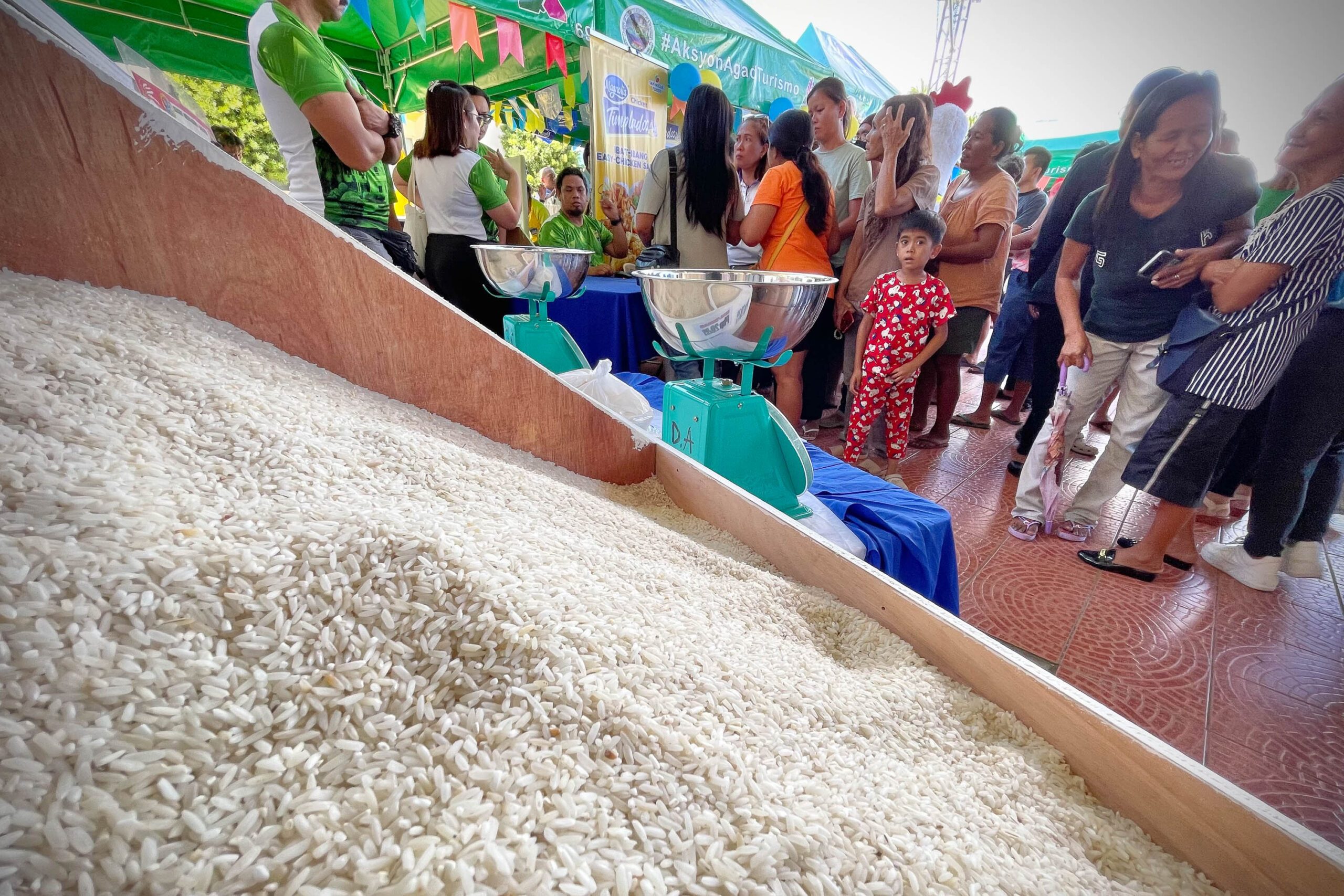SUMMARY
This is AI generated summarization, which may have errors. For context, always refer to the full article.

MANILA, Philippines – Rice, the staple that feeds millions of households in the Philippines, is nearing an all-time high inflation rate that may soon be breached as rice prices are expected to go up “strongly” until the middle of 2024.

Prices for rice continue to climb as rice inflation stands at 24.4% in March 2024, inches from the record high of 24.6% in February 2009. National Statistician Dennis Mapa projected that rice inflation could increase until July.
“The expectation is it will actually increase strongly until July because of base effect unless there is really some intervention na mangyayari sa market na biglang bababa ‘yung presyo (in the market that will bring down the price),” Mapa said in a press conference on Friday, April 5. “Wala kami nakikita sa ngayon (We don’t see that right now).”
Rice inflation could slow down a little by August, but Mapa noted that the figure may still be in the double digits.
Here is a snapshot of the average market price of 1 kilogram of rice in March 2024 vs March 2023:
- Regular milled – P51.11 vs P39.90
- Well-milled rice – P56.44 vs P44.23
- Special rice – P64.75 vs P54.0
Aside from the year-on-year increases, rice also got more expensive in March compared to February:
- Regular milled – P51.11 vs P50.44
- Well-milled rice – P56.44 vs P55.93
- Special rice – P64.75 vs P64.42
What’s driving this? According to the National Statistician, factors include the high price of rice in the world market, the effects of El Niño, and base effects. In this case, base effects refer to how last year’s relatively low rice prices exaggerates this year’s rice inflation rate prices since prices are compared to that low base.
However, Mapa noted that even if you look at the price of rice on a month-on-month basis, you can still see prices increasing. According to the Philippine Statistics Authority, it’s also because the prices of both palay and rice continue to increase.
“Ang nakikita talaga natin dito ay ‘yung world price kasi, ‘yung presyo ng bigas sa world market ay continuously tumataas. Medyo tight ‘yung supply sa world market, and this creates impact on our local rice price,” he said.
(What we’re seeing is that the price of rice in the world market is continuously increasing. The supply in the world market is a bit tight, and this creates an impact on our local rice price.)
Some farms with no access to irrigation are also worried about the effect that El Niño could have on the production of their farms.
“May mga areas tayo, farmlands, na ang mga farmers natin ay nagsabi na may mga damages (There are areas, farmlands, where our farmers say there are damages),” he added. “We will be seeing the impact of this in the second quarter.”
The price of rice has the highest weight in determining the inflation rate, specifically 8.87% of the entire commodity basket used in assessing inflation. The effect of rice on inflation is even more pronounced for bottom income households, with a weight of 17.9%.
That means changes in the price of rice can swing inflation in either direction. To demonstrate, rice inflation was responsible for 1.8 percentage points of the 3.7% March inflation rate. When it comes to inflation for the bottom 30% income households, rice inflation contributed to 3.7 percentage points of the 4.6% inflation rate they experienced in March. – Rappler.com
Add a comment
How does this make you feel?



![[ANALYSIS] How one company boosts farmer productivity inside the farm gate](https://www.rappler.com/tachyon/2024/06/bioprime-farmgate-farmer-productivity-boost.jpg?resize=257%2C257&crop=465px%2C0px%2C1080px%2C1080px)


There are no comments yet. Add your comment to start the conversation.